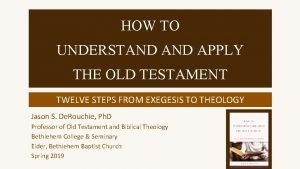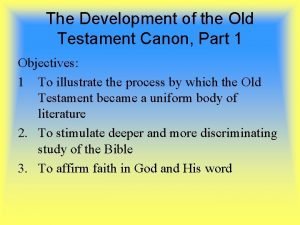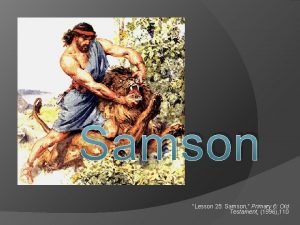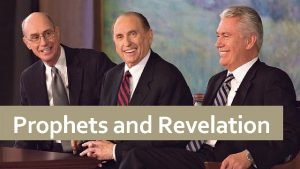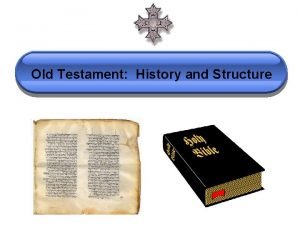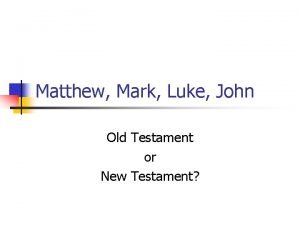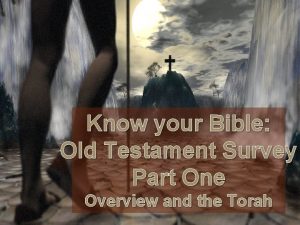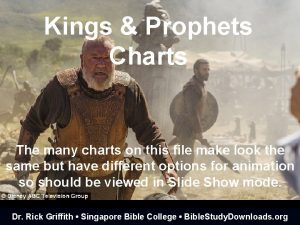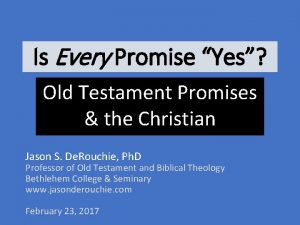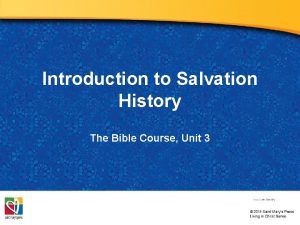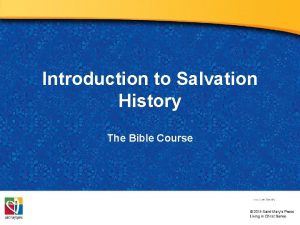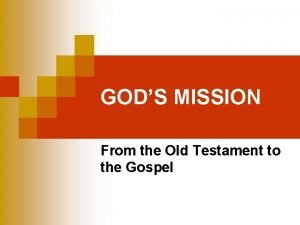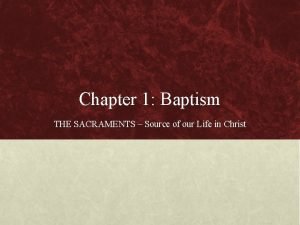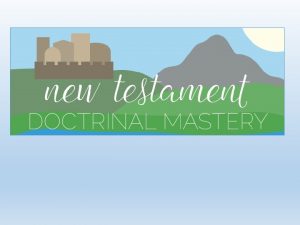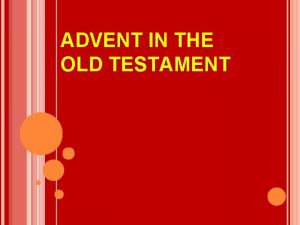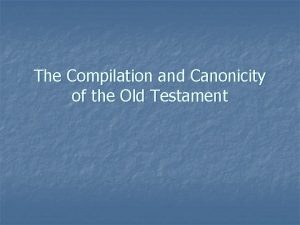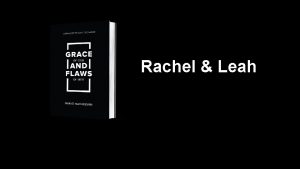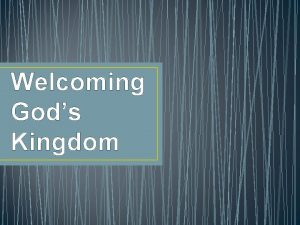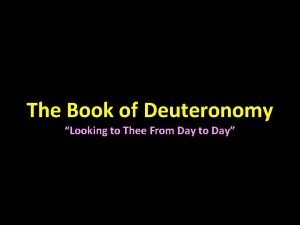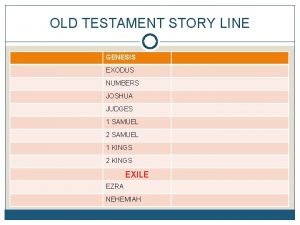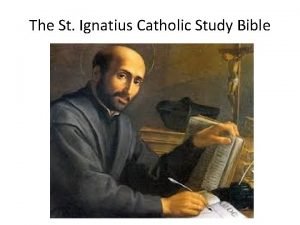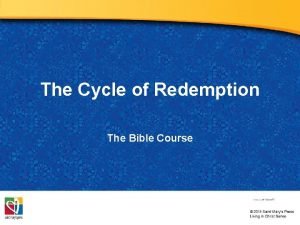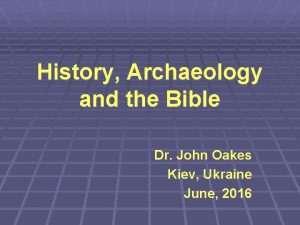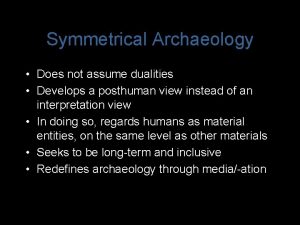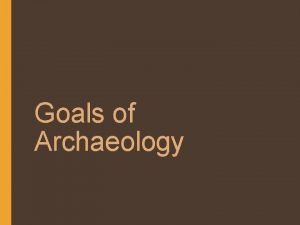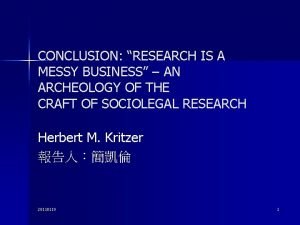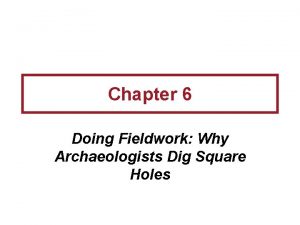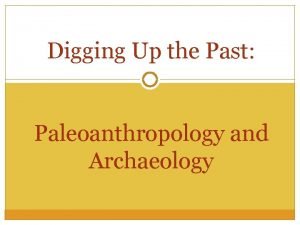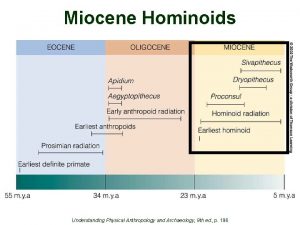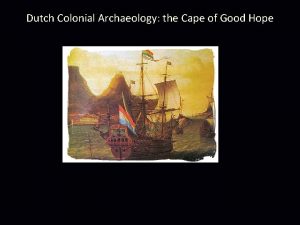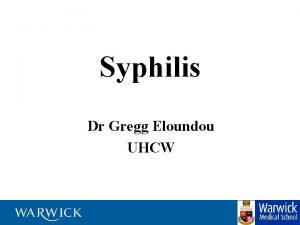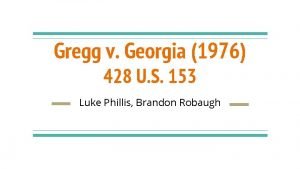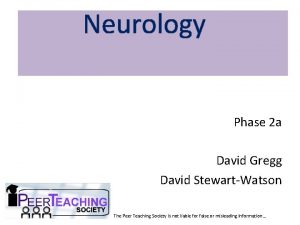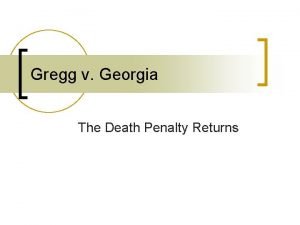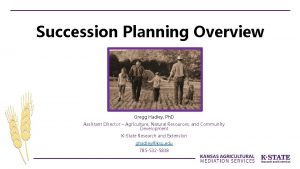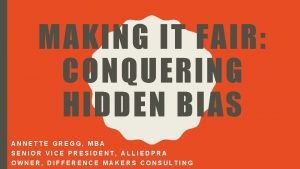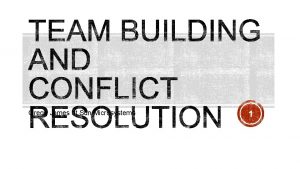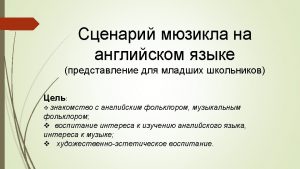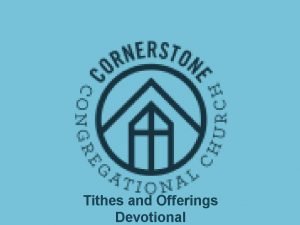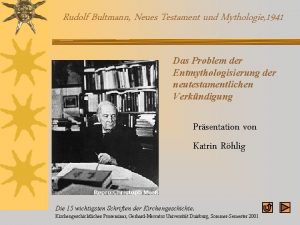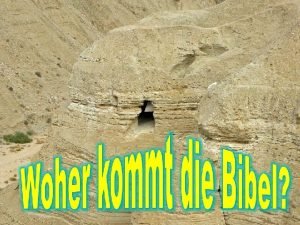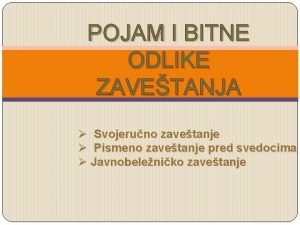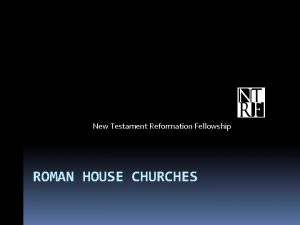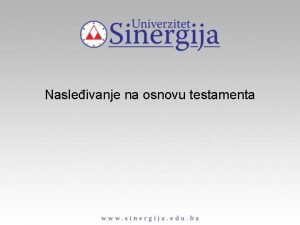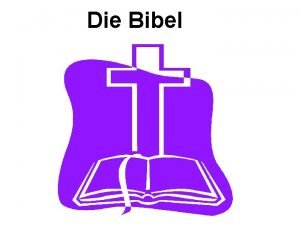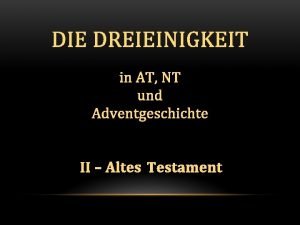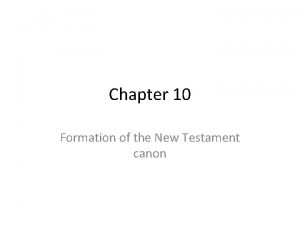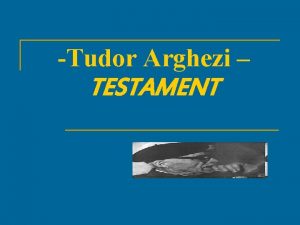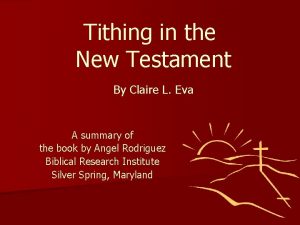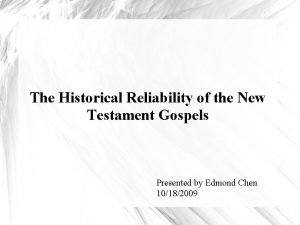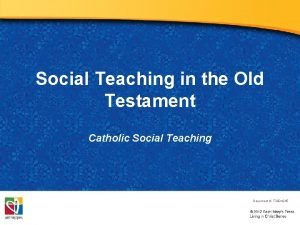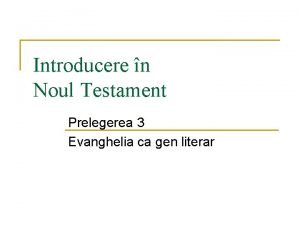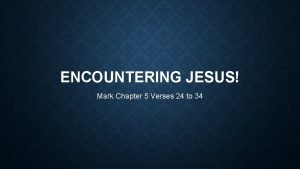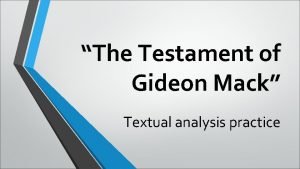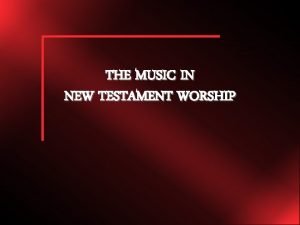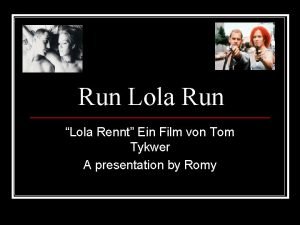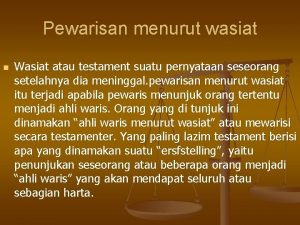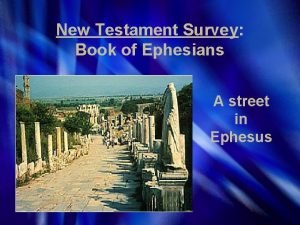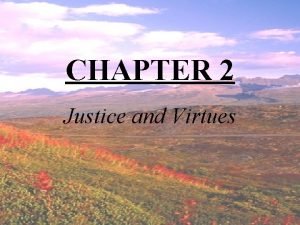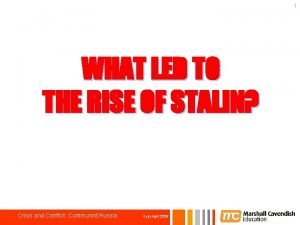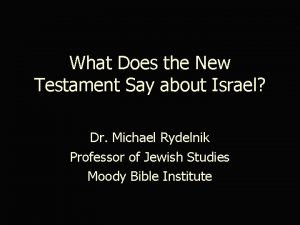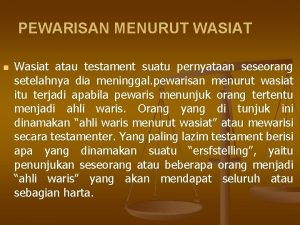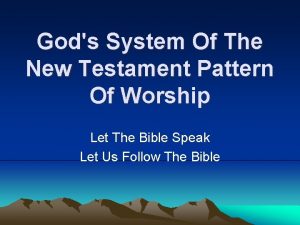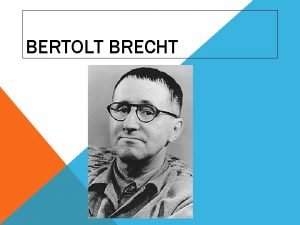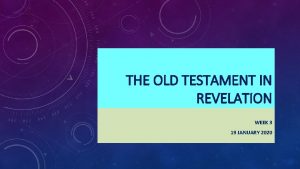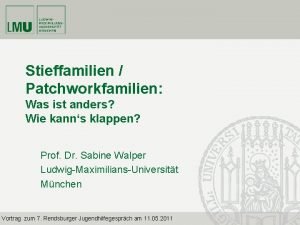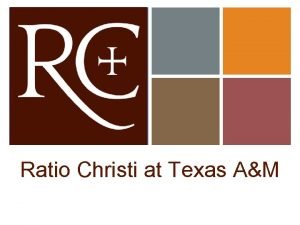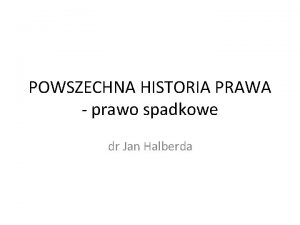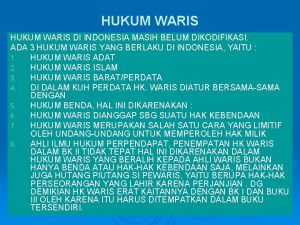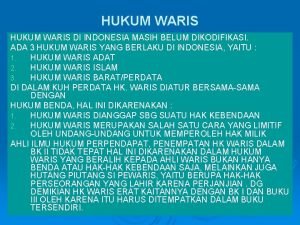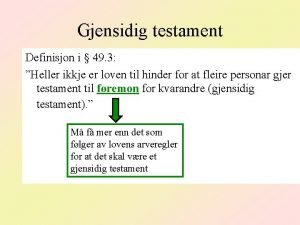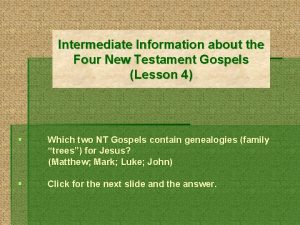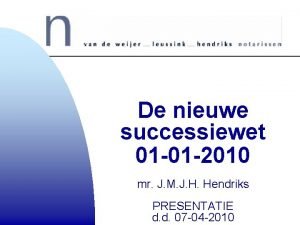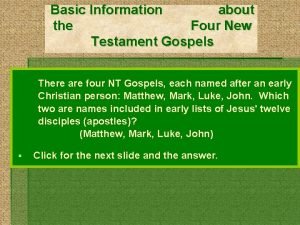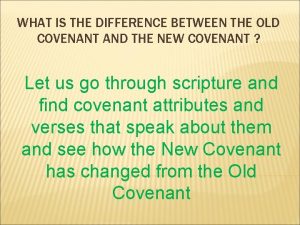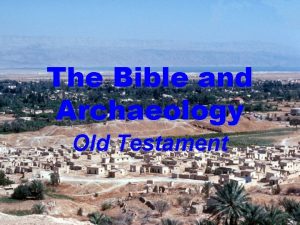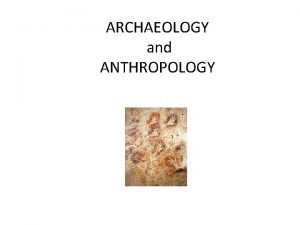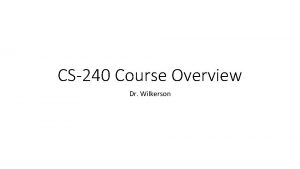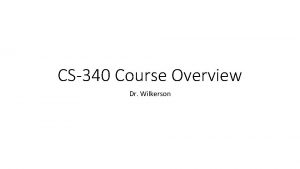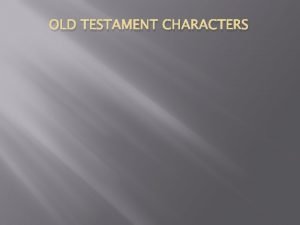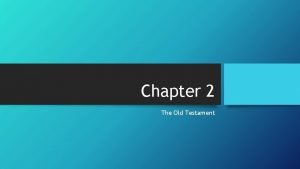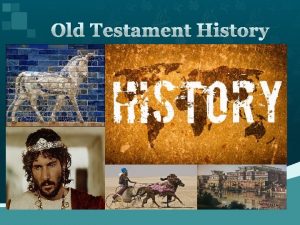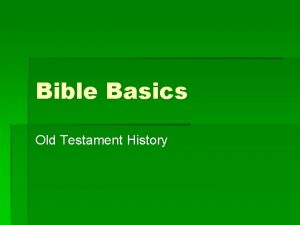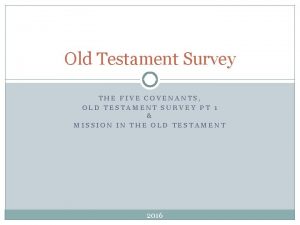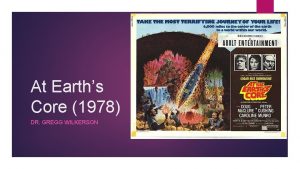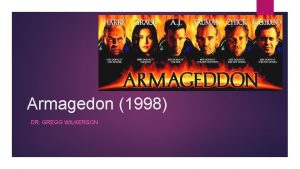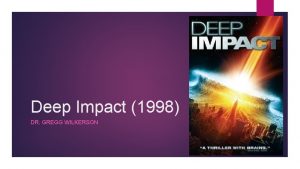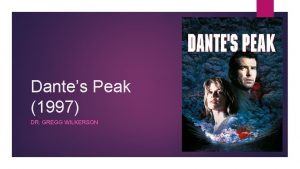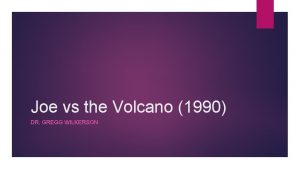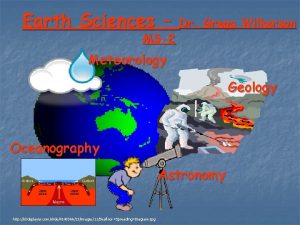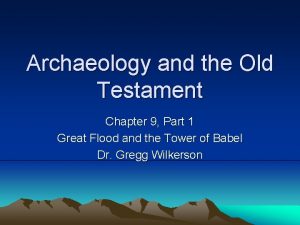Archaeology and the Old Testament Dr Gregg Wilkerson

















































































































































- Slides: 145

Archaeology and the Old Testament Dr. Gregg Wilkerson Chapter 2 Editors and Canon of the Old Testament

Primary Questions • • Who were the editors? When did they work? Where was the editing done? What changes in the text were introduced?

Minimalist vs Maximalist • Minimalist: • Old Testament is largely a mythical fabrication • Created during the Babylonian Exile to create a new Jewish nationalism

Minimalist vs Maximalist • Maximalist: • Genesis was written and transmitted by the Patriarchs themselves • Moses compiled the Pentateuch • Writings about the Exodus, Conquest, Judges, United Monarchy, Divided Kingdoms and Exile were all pretty much contemporaneous literary creations of several different individuals

Myth to History to Myth • take historical events and metamorphose them into myths • or • take myths (parables) and metamorphose them into history

Historicalization • George Washington • Cherry Tree • Throw dollar across the Potomac

Historicalization • Jonah and the Great Fish

Mythologicalization • Elijah and Elisha • Samson (Hebrew Hercules)

Evidence • The Editorial Process

CHANGES IN THE TEXT: INSERTED LINE

CHANGES IN THE TEXT: INSERTED WORDS

The Documentary Hypothesis • Names of God changed through time -J (Yahweh, Yahwist): Judah: 922 -722 BC -E (Elohim, Elohist): Israel: 922 -722 BC -P (Priestly Source): Jerusalem: Hezekiah: post 722 BC -D (Deuteronomist): Judah: Josiah: 640 -587 BC) -R (Redactor): Jerusalem: Ezra: Mid 5 th century BC

Documentary Hypothesis • Theology changed through time • Role of Priests and Levites changed through time

Key verses in Documentary Hypothesis debate Gen 4: 26 Seth had a son. . . at that time people began to pray to Yahweh Ex 6: 3 Then Elohim said to Moses, “I am Yahweh. I appeared to Abraham, Isaac and Jacob by the name El Shaddai (God Almighty), but they did not know me by my name, Yahweh (YHWH).

Key Verses in the Documentary Hypothesis debate • Gen 1: 1 to 2: 3 In verses before Genesis 2: 4, the creation story uses Elohim to refer to God. In the rest of Genesis, the Lord (YHWH), or Lord God (YHWH Elohim) is used

Arguments for the Documentary Hypothesis • • Deuteronomy (“Second Telling) Differences in tone and theology Associated with Reforms of Josiah 622 BC “Discovery” of the Law in the Temple Centralization of the religion in Jerusalem Suppression of rural shrines (“high places) Elevation of Aaronite priesthood over other Levites

Arguments for the Documentary Hypothesis • • • Deuteronomy (“Second Telling”) Shift in theology Associated with reforms of Josiah, 622 BC Centralization of religion in Jerusalem Suppression of rural shrines “high places” Abstraction of God

Arguments for the Documentary Hypothesis • Different sources can be identified • The stories from different sources can be read by themselves

EXODUS 14 THE RED (REED) SEA Green = J Red = E Black = P

Theological Shifts Pre-Deuteronomy -God physically dwells In the Temple -God lives with his people -God is anthropomorphic Deuteronomy -God’s “Name” is in the Temple -God’s home is in heaven -God is celestial

Theological Shifts Pre-Deuteronomy God is physically present in the Burning Bush Of Exodus 19: 2 Deuteronomy God’s voice comes from the Burning Bush in Deut. 4: 36

Theological Shifts Pre-Deuteronomy Death can occur From seeing God (Gen. 32: 32) Deuteronomy Death can occur from hearing God (Deut. 4: 33)

Theological Shifts Pre-Deuteronomy Ark is part of God’s Throne (footstool Plus cherubim) Deuteronomy Ark carries the Tablets of the Law, no cherubim

NIMRUD IVORY CHERIBIM

Ivory Cherubim, 8 th century BC Arsian Tash, Syria; Ezekiel 1: 10



Theological Shifts Pre-Deuteronomy Ark goes into battle Deuteronomy Ark not mentioned in connection with any battle

Theological Shifts Pre-Deuteronomy Angels interact with Humans and lead Them to the Promised Land Deuteronomy The Lord leads his People to the Promised Land

Theological Shifts Leviticus Sin expiated through “pleasing oder” of Burnt sacrifice Deuteronomy Sin expiated by prayer

Theological Shifts Pre-Deuteronomy Prayer conducted By Elders without Priestly intermediary Deuteronomy Prayer conducted only by the Priests

Theological Shifts Pre-Deuteronomy Sacrifices consumed Only by the priests Or holocaust offerings Where all is burned Deuteronomy Sacrifices eaten in the Sanctuary by the worshipers or distributed to the destitute Focus in on community. Focus is on repentance individual repentance

Theological Shifts Pre-Deuteronomy 4 th commandment Based on Creation (Ex. 20: 11) Deuteronomy 4 th commandment Based on the Exodus (Deut. 5: 15)

Theological Shifts Pre-Deuteronomy Religion is “earthy” Connected to life cycles Deuteronomy Religion is abstract

Theological Themes of Deuteronomy 1) 2) 3) 4) 5) 6) 7) 8) 9) struggle against idolatry and syncretism, centralization of the cult in Jerusalem covenant and election of Israel monotheistic creed observance of the law inheritance of the land Retribution fulfillment of prophecy Dravidic dynasty

Parallel Accounts Genesis 1 2 Genesis

Parallel Accounts Adam’s descendants through Cain (Gen. 4: 17 -21) Adam’s descendants through Seth with likesounding names (Gen. 5)

Parallel Accounts Noah has 2 Birds (Gen. 7: 2) Noah has 7 Birds (Gen. 7: 8)



Parallel Accounts Abraham’s Covenant at (or after) Salem (Gen. 15) Abraham’s Covenant at (or before) Mamre (Gen. 17)

Parallel Accounts God’s true name revealed to Moses in Midian (Ex. 3: 13 -16) God’s true name revealed to Moses in Egypt (Ex. 6: 2 -3)

Parallel Accounts Aaron and Moses draw water from a rock at the desert of Sin (Ex. 7: 1 -7) Aaron and Moses draw water from a rock at the desert of Zin (Num. 20: 1 -6)

Parallel Accounts The Tent of Meeting is a portable temple the inside the camp (Ex. 25 -31, 36 -40) The Tent of Meeting is outside camp where Moses alone goes (Ex. 37: 7 -11)

Parallel Accounts Ark of the Covenant is made of acacia wood covered with gold. (Ex. 25: 10 -22) Ark of Covenant is an unadorned box (Deut. 10: 1 -5)

Parallel Accounts Wilderness camp lead by Horeb while the cloud hovers over the camp by day (Num. 19: 29 -39) Wilderness camp lead by a pillar and cloud of fire (Num. 10: 11 -28)

Parallel Accounts Ark goes before the camp at distance of 3 day’s travel (Num. 10: 33) Ark stays in the midst of the camp (Num. 2: 16 -17)

Parallel Accounts • They are common in the OT • They indicate separate traditions from different sources • Later editors modified or moved the chronology of the accounts • Earliest compilations were not uniform historically or theologically

Arguments against the Documentary Hypothesis • Parallel Structure (example Ex. 5: 2 -3) A: B: A': B': I am Yahweh And I made myself known to Abraham, to Isaac, and to Jacob as El Shaddai. And My name is Yahweh Did I not make Myself known to them

Arguments against the Documentary Hypothesis • Repetitions (doublets) • Parallel Accounts (redundancy) Example: Genesis 7: 21 -22 A: B: B': A': They perished Every living that moves on earth. . . Everything that has the breath of the living spirit. . . They died

Arguments against the Documentary Hypothesis • Chiastic (mirror image) Structure • Example: Gen 6: 10 to 9: 19

Chiastic (mirror -image) literary structure

Arguments against the Documentary Hypothesis • Style Variations -same author changes style over their career -different authors adopt same style as older ones

Arguments against the Documentary Hypothesis • Theological unity of the J/E/D/P “sources” -not the work of a committee -layers of editing

LOST TEXTS The Book of the Wars of Yahweh (Numbers 21: 14 -15) The Book of Jashar (Joshua 10: 12 -13; 2 Samuel 1: 19 -27; and 1 Kings 8: 12 -13 [in LXX]

LOST TEXTS The Chronicles of the Kings of Judah (mentioned 15 times in the OT) The Chronicles of the Kings of Israel (mentioned 18 times in the OT) NOT THE SAME AS OUR CHRONICLES 1 AND 2

LOST TEXTS The Acts of Solomon (or Book of the Affairs of Solomon) (1 Kings 11: 41) Acts (or Chronicles) of Samuel the Seer, Gad the Seer and Nathan the Seer (1 Chronicles 29: 29)

LOST TEXTS History of Nathan the Prophet and Prophecy of Ahijah the Shilonite (2 Chronicles 9: 29) Visions of Iddo the Seer (2 Chronicles 9: 29)

LOST TEXTS Acts (or Chronicles) of Shemaiah the Prophet and Iddo the Seer (2 Chronicles 12: 15) Acts (or Chronicles) of Jehu son of Hanani ("recorded in the Book of the Kings of Israel") (2 Chronicles 20: 34)

LOST TEXTS Acts (or Chronicles) of the Seers (2 Chronicles 33: 19) Midrash (Story) of the Prophet Iddo (2 Chronicles 13: 22) Midrash (Commentary) on the Book of Kings (2 Chronicles 24: 27)

LOST TEXTS • The record that survives is a partial account • Some accounts were transmitted, some were not • Un-transmitted accounts were not as valued as those that survive

The Ministerial Feud • Priests verses Levites • Descendents of Aaron vs Descendants of Levi • Story of the Censers and the rebellion of Korah in Numbers 16 and 17 • Levites were originally consecrated to perform all religious function of the Tabernacle (Numbers 8), but in Numbers 17: 5 we read that ". . . no layman, no one outside Aaron's line, may come near Yahweh with incense to burn. . . "

Ministerial Feud • In Chronicles the term "Levite" is used instead of the phrase "the [Aaronite] priests and Levites" as is common in Kings. • The Chronicler resisted the conquest of the priesthood by Aaronites. • Late editors were Aaronite, so they get “top billing” in the OT texts.

Ezra/Nehemiah • Example of the editorial process • Occur as one book in the Hebrew Bible and are grouped with the "Writings" (as is Chronicles) instead of in the Historical Books (Joshua, Judges, Kings)

Ezra/Nehemiah • Has three sources • 1) a historical introduction (Ezra 1 -6) • 2) the "Ezra Source" (Ezra 7 -10 plus Nehemiah 8 -10, written in the 3 rd person) • 3) the "Nehemiah Memoir" (Nehemiah 1 -7, 11 -13, written in the 1 st person, probably by Nehemiah himself

Ezra/Nehemiah • The present version of the book(s) is thought to be a compilation of an editor called the "Redactor"

Canon of the Old Testament Fundamentalist Canon as soon as spoken Liberal Historical Usage Popular opinion Church councils Contrasting views of the Canon

Editors of the Old Testament • • • Period Original Editor Documentary Hypothesis Equivalent ---------------------------------------------------Creation Adam Elohist Flood Noah, Seth Elohist Patriarchs (1900 BC) Abraham, Joseph, etc. Elohist Exodus/Conquest (1400 BC) Moses Yahwist Judges Scribes of the Judges Yahwist Golden Age David, Solomon Psalms, Proverbs Divided Kingdom Prophetic Schools Priestly Source (1010 -420 BC) • • • Exile in Babylon Second Temple Period • Persian Period Josiah (622 BC) Deuteronomist Ezra/Nehemiah or(458 -420 BC) Redactor Second Deuteronomist Holiness Code Daniel

Canon of the Old Testament • “Canon” comes from the Greek “kanon” or Hebrew “kaneh” meaning “reed” or “measuring rod. ” • Dualistic: Holy writings vs Profane writings

Tripartite Division of the Hebrew Bible • The Hebrew Bible is arranged differently than out Old Testament

24 BOOKS OF THE HEBREW BIBLE IN THE TRIPARTITE DIVISION Part 1 Part 2 Torah (Law) Prophets Part 3 Writings (Greek Hagiographa) (5 books) (8 books) (11 books) ---------------------------------------------------Genesis 4 Former Prophets Psalms Exodus Joshua Proverbs Leviticus Judges Job Numbers 1+2 Samuel (1 book) 5 Minor Scrolls (Megillot) Deuteronomy 1+2 Kings (1 book) Song of Songs Latter Prophets Ruth Isaiah Lamentations Jeremiah Ecclesiastes Ezekiell Ester 12 Minor Prophets Daniel (1 book) Ezra-Nehemiah (1 book) 1+2 Chron (1 book)

Numerical Symmetry of the Hebrew Bible (omitting Daniel) • • WORDS BOOKS TORAH 80, 000 5 FORMER PROPHETS 70, 000 4 Subtotal 150, 000 -----------------------------------LATTER PROPHETS 72, 000 4 WRITINGS 78, 000 5 major books and 5 minor books • Subtotal 150, 000 • Total 300, 000 words (+/- 300 words)

Numerical Symmetry • Daniel is a late addition (c. 150 BC) • Scribes would count words to insure proper copying • Numerical counting a “proper” way to decide what should be in the canon • Numerical symmetry was created by Ezra. Nehemiah from materials they compiled (445433 BC). Five (5) little books were added to writings to make symmetry work: Ruth, Song of Songs, Ecclesiastes, Lamentations and Ester

22 or 24 books? • Appending Ruth to Judges and Lamentations to Jeremiah gives a Hebrew Canon with the same number of books, 22, as there are letters in the Hebrew alphabet • LXX and 4 Edras have 24 books and do not have the Tripartite Division • Tripartite division was lost by 250 -150 BC

Sequence of Canonization • Law • Prophets • Writings

Preservation vs Canonization • If it survived, it is usually part of the canon • If Lost Texts were found, would they be added to the canon?

Samaritan Pentateuch • Compiled c. 432 BC • Still the only holy writings of the presentday Samaritans • the Law (Genesis-Deuteronomy) was canonical for all Hebrews in 432 BC

Pre-Septuagint (LXX) • included the proto-Samaritan Pentateuch and the Hebrew predecessor of the Septuagint

Septuagint (LXX) • First translation of Hebrew Bible into Greek • 250 -150 BC • LXX • 70 scholars working 70 weeks • original translation was started by Ptolemy Philadelphus (285 -247 BC) • Many version, they all vary

Septuagint (LXX) • Books are in same order as in English Bibles, which follow the Vulgate version of Jerome • Tripartite Division was lost • Included all books of the Apocrypha

The Apocrypha • Greek for “hidden things” • 1 st meaning: so important and precious that they must be hidden from the public and reserved for initiates, the inner circle of believers • 2 nd meaning: hidden because writings were not good enough to make the “cut”, they were questionable, secondary or heretical

The Apocrypha • 3 rd meaning: Based on Jerome who did not consider them canonical: Apocryphal book are those outside the ancient Hebrew canon. • In the 2 nd century AD, Alexandrian Jews adopted Aquila's Greek version of Old Testament which excluded the Apocryphal books

Ecclesiasticus • “Wisdom of Jesus ben Sirach” (circa 170 BC) • resembles Proverbs • the chief monument of primitive Sadduceeism • makes explicit mention of the Twelve (Minor) Prophets

Ecclesiasticus • Ecclesiasticus 24: 33 "I will yet pour out doctrine as prophecy and leave it unto generations of ages" suggests that the canon of the Old Testament was not complete. • Ecclesiasticus suggest that by 170 BC the Law and the Prophets had been canonized, but not the Writings

1 and 2 Maccabees (125 -70 BC) • 1 Maccabees was-written originally in Hebrew • The writer knew of deeds of John Hyrcanus (135 -105 BC) but not of conquest of Pal by Pompey (63 BC) • contains several allusions to Daniel and Psalms, suggesting that these books were already canonical at this time

Dead Sea Scrolls The Discoveries • They were found in caves on the western side of the Dead Sea near the wilderness settlements of Qumran and Ein Gedi • Give important information about the formation of the canon







Dead Sea Scrolls The Discoveries • The first discoveries of the Dead Sea Scrolls were made by Jum’a Muhammed and Muhammed edh‑Dhib (Muhammed the Wolf), two Ta’amireh Bedouin cousins • They said they first found scrolls in 1947


Dead Sea Scrolls The Discoveries • Antiquities dealers and negotiators like Khalil Iskander Shahin (known as “Kando”) purchased scrolls for $20 (US) and sold them for extraordinary profits


Dead Sea Scrolls • Political tensions following WWII and discussions in UN to establish a state of Israel • Hebrew scholar Sukenik’s journeys into Arab quarter to examine and obtain scrolls on eve on UN vote, Nov. 29, 1947


Dead Sea Scrolls • Yigael Yadin • one of the first and most influential of the Dead Sea Scroll scholars • helped to acquire remaining scrolls from Cave 1 and the Temple Scroll of Cave 11


Dead Sea Scrolls The Discoveries • Metropolitan (Archbishop) Samuel of the Jacobite Syrian Christians in Jerusalem. • purchased four scrolls from “Kando” for about $97. • After several failed negotiations, those four scrolls made there way through Syria to a bank vault in New York. • Prior to that, Samuel had allowed some of the scrolls to be photographed


Dead Sea Scrolls The Discoveries • Six years later, Metropolitan (Archbishop) Samuel placed an advertisement in the Wall Street Journal for the four scrolls on June 1, 1954


Dead Sea Scrolls The Discoveries • Eventually Yigael Yadin arranged for purchase of the scrolls for $250, 000

Archaeological Context of the Dead Sea Scrolls and Qumran • The caves from which the scrolls came also had distinctive pottery forms



Archaeological Context of the Dead Sea Scrolls and Qumran • The scrolls are associated with the religious community of Qumran where many of the scrolls were produced.



Monastery or Pottery Factory? • Recent excavations suggest Qumran is a pottery making site • Only had a few workers • No papyrus or parchment • Mikveh is a reservoir for water used in pottery making





Dead Sea Scrolls: Content • fragments, portions, or whole copies of all Old Testament Books of the tripartite division, except Ester • 200 fragmentary manuscripts, some dated as early as the 3 rd century BC • Most material is from the 1 st and 2 nd centuries B. C

DSS and the Canon The DSS have 3 textural sources: • 1) Babylonian (proto-Masoretic) • 2) Old Palestinian (Samaritan Pentateuch, made in Jerusalem and Tiberius) • 3) Egyptian (Alexandrian; Septuagint).

DSS and the Canon • the Qumran community had no "canon" and no standardized text between 150 BC and 70 AD • two divergent versions of Jeremiah, one like the Masoritic text, the other like the Septuagint version, which is about a seventh shorter

DSS and the Canon • Isaiah was in the form we find it in our bibles today in 2 nd century BC Dead Sea Scrolls texts • Generally the manuscripts at Qumran had 95% agreement with Masoritic text formed 400 years later • The Hebrew Scriptural canon was established prior to New Testament times

Canon in New Testament times • Final order of canon is reflected in Matt. 23: 35, cf Lk 11: 51: "That upon you may come all the righteous blood of Abel the righteous unto the blood of Zachariah son of Barachiah, whom you slew between the sanctuary and the alter. " The murder of Zachariah (2 Chron 24: 20 -21) is last episode in Chronicles which was last book in Hebrew tripartite division of Old Testament.

Canon in New Testament times • If chronologic overview was intended by Matt 23: 35, then the last murdered prophet would be Uriah son of Shemaiah who was murdered in Jehoiakim's reign in 9 th cent. BC (Jer 26: 23). Jesus would have said "From Abel to Uriah"

The First Jewish Revolt: 70 AD • The Hebrew Canon was crystallized by Pharisees, the only religious party to survive the debacle of 70 AD, following the First Jewish Revolt and destruction of Herod’s Temple by Emperor Titus.

Flavius Josephus’ Contra Apionium (c. 100 AD) • Josephus' tripartite division of the Old Testament is as follows: : • "5 of Moses" = Pentateuch • "13 Prophets" = 8 Prophetic Books (Former+Latter+Minor with Jeremiah. Lamentations as one book)+ Daniel, Job, Chronicles, Ezra-Nehemiah, and Ester • "4 hymns and maxims" = Psalms, Proverbs, Song of Songs, Ecclesiastes • ---- • 22 books of Hebrew Bible.

Councils of Jamina (90 and 118 AD) • Ecclesiastes and Chronicles were debated and their canonicity ratified. • Rabbi Akiba lead the councils and saw a need for one symbol for Diaspora Jews to rally around. • From the Jamina councils came the final form or our Masoritic text • Proverbs, Song of Songs, and Ester were NOT included as this time

Councils of Jamina (90 and 118 AD) • 1. The books MUST be written before 400 BC • 2. The books MUST be written WITHIN Palestine • 3. The books MUST be written in the Hebrew language • 4. The books MUST conform to the Pentateuch

Jewish Doubts About the Hebrew Canon (2 nd century AD) • Proverbs, Song of Songs, Ecclesiastes, and Ester continued to be popular topics for analysis and discussion • Song of Songs is about man, not God. Ecclesiastes, like all wisdom literature has inconsistencies but quotes Torah from the beginning to the end. God is not mentioned even once in Ester

Jewish Doubts About the Hebrew Canon (2 nd century AD) • Proverbs, Song of Songs, Ecclesiastes, and Ester were not in the Hebrew canon from the 2 nd to the 6 th century BC. • From the Persian period to the time of the Masorites, the canonical writings were copied and transmitted by scribes or "Sopherim". For descriptions of this office and profession see Ezra 7: 6, 11, 12 and Nehemiah 8: 13

Masorites: 500 AD to 1650 AD • Beginning about 500 AD and lasting to the invention of printing • Masorites copied the holy writings by hand. • The "Masoretic Text" is basis for 90% of our English bibles • The Masorites added vowel signs to the text

Masorites: 500 AD to 1650 AD 3 main groups of Masorites 1) Babylonian 2) Palestinian 3) Tiberian. With time, the Tiberian school gained prominence The 10 th century Tiberian Codices* of Ben Asher Ben Naphtali are the basis for our current "Masoretic Text".

Masorites: 500 AD to 1650 AD • The Leningrad Codex, in the St. Petersberg Public Library, dates to about 1008 AD • It is the oldest complete text of the Hebrew Bible

LENINGRAD CODEX, 1008 BC OLDEST MASORITIC TEXT http: //www. usc. edu/d ept/LAS/wsrp/educati onal_site/biblical_ma nuscripts/Leningrad. C odex. shtml, July 30, 2004

Targums • As the Hebrews stopped speaking Hebrew, and started speaking Aramaic and other languages, there arose the targums, or competing translations in non. Hebrew tongues. These were often paraphrases

The Christian Church Canon of the Old Testament Eastern or Oriental (Orthodox) Church • The Pesh or Syriac version of Old Testament (cir 150 AD) omits Chronicles. • Justin Martyr (264 AD) held to Old Testament of Jews. • The canon of Melito, bishop of Sardis (cir 170 AD) omits Ester. • Origin (d. 254 AD) says there are 22 books. • The Council of Laodicea (cir 363 AD), kept the Hebrew Old Testament, and rejected the Apocrypha

The Christian Church Canon of the Old Testament Western (Catholic) Church • The leadership of the Western (“Catholic) church held to a strict canon, but homiletically used a larger one. • They often quoted from Apocrypha. • Extensive use of the Septuagint lead to blurring of Old Testament and Apocrypha

The Christian Church Canon of the Old Testament Western (Catholic) Church • Jerome of Bethlehem (d. 420 AD) gives 22 books and says they equal the 22 letters of the Hebrew alphabet, keeping to the strict canon of the Jews. • Augustine, Bishop of Hippo (N. Africa, 353 -430 AD) lead three great councils at Hippo (393) and Carthage (397 and 419).

The Councils of Hippo • Lead to the adoption of 44 books (including 20 Deutero-canonical Apocrypha books) for the Old Testament by the Western (Catholic) Church.

Council of Carthage (345 -419 BC) • confirms the 44 books • Martin Luther (16 th cent) published a version of the Bible with the Apocrypha in between the Old Testament and New Testament. • In response, the Council of Trent is called

Council of Trent (1546) • Apocrypha declared to be canonical by the Western (Catholic) Church

First Vatican Council 1870 • Affirms findings of the Councils of Hippo, Carthage and Trent • Apocrypha is canonical

The Christian Church Canon of the Old Testament Protestant Church • Accepts only books of the Tripartite Division and Daniel • Rejection of the Apocrypha • Martin Luther (16 th cent) published a version of the Bible with the Apocrypha in between the Old Testament and New Testament (see New English Bible).

Conclusion • There is no universal agreement between Christians and Jews as to what is authoritative. • Canonical and pseudo-canonical texts have a long history of creation, editing and transmission. • Descriptions of history and theology changed over time.

Application • What is your canon? • What parts of your canon are historical? • What parts are poetic, allegorical or parables? • What is more important, what is written or what is empowered by the Spirit? • Can the Church survive without a canon?

My Canon • Tripartite Division • Expand the “Writings” -Daniel -Revelation -Chronicles of Narnia -Screwtape Letters -Purpose Driven Life

NEXT TIME • Textural Criticism
 How to understand and apply the old testament
How to understand and apply the old testament Wilkerson refrigerated air dryer
Wilkerson refrigerated air dryer Andre wilkerson
Andre wilkerson Ot canon
Ot canon Samson and delilah lds
Samson and delilah lds Doctrinal mastery core document
Doctrinal mastery core document Timeline of haggai
Timeline of haggai Matthew mark luke john old testament
Matthew mark luke john old testament Old testament survey part 1
Old testament survey part 1 Kings and prophets chart
Kings and prophets chart Old testament promises
Old testament promises Salvation history examples
Salvation history examples Introduction to salvation
Introduction to salvation Mission in the old testament
Mission in the old testament How is baptism prefigured in the old testament
How is baptism prefigured in the old testament What is the old testament all about
What is the old testament all about How many books in old testament
How many books in old testament Old testament doctrinal mastery
Old testament doctrinal mastery Is titus in the old or new testament
Is titus in the old or new testament Advent in the old testament
Advent in the old testament Old testament canon timeline
Old testament canon timeline Rachel old testament
Rachel old testament What is the kingdom of god in the old testament
What is the kingdom of god in the old testament Deuteronomy 5:19
Deuteronomy 5:19 Old testament jewish temple layout
Old testament jewish temple layout Ignatius catholic study bible
Ignatius catholic study bible Cycle of redemption
Cycle of redemption The history and archaeology of the bible
The history and archaeology of the bible Symmetrical archaeology
Symmetrical archaeology Goals of archaeology
Goals of archaeology Archaeology is a messy business
Archaeology is a messy business Arbitrary vs natural levels archaeology
Arbitrary vs natural levels archaeology Archaeology
Archaeology Pliopithecus
Pliopithecus Voc mengalami kebangkrutan dan dibubarkan pada tahun
Voc mengalami kebangkrutan dan dibubarkan pada tahun Dr gregg eloundou reviews
Dr gregg eloundou reviews Gregg rosenberg
Gregg rosenberg Troy leon gregg
Troy leon gregg Gregg v georgia
Gregg v georgia Dr gregg eloundou
Dr gregg eloundou David gregg, iv, md
David gregg, iv, md Gregg vs georgia
Gregg vs georgia Triade di gregg
Triade di gregg Gregg hadley
Gregg hadley Ray gregg
Ray gregg Annette gregg
Annette gregg Gregg vesonder
Gregg vesonder Gregg drumm
Gregg drumm Once upon a time there lived a little girl name
Once upon a time there lived a little girl name Once upon a time there lived an old man and an old woman
Once upon a time there lived an old man and an old woman What is your name how old are you
What is your name how old are you Once upon a time hansel
Once upon a time hansel Hình ảnh bộ gõ cơ thể búng tay
Hình ảnh bộ gõ cơ thể búng tay Slidetodoc
Slidetodoc Bổ thể
Bổ thể Tỉ lệ cơ thể trẻ em
Tỉ lệ cơ thể trẻ em Voi kéo gỗ như thế nào
Voi kéo gỗ như thế nào Thang điểm glasgow
Thang điểm glasgow Hát lên người ơi alleluia
Hát lên người ơi alleluia Các môn thể thao bắt đầu bằng tiếng bóng
Các môn thể thao bắt đầu bằng tiếng bóng Thế nào là hệ số cao nhất
Thế nào là hệ số cao nhất Các châu lục và đại dương trên thế giới
Các châu lục và đại dương trên thế giới Cong thức tính động năng
Cong thức tính động năng Trời xanh đây là của chúng ta thể thơ
Trời xanh đây là của chúng ta thể thơ Cách giải mật thư tọa độ
Cách giải mật thư tọa độ Làm thế nào để 102-1=99
Làm thế nào để 102-1=99 độ dài liên kết
độ dài liên kết Các châu lục và đại dương trên thế giới
Các châu lục và đại dương trên thế giới Thơ thất ngôn tứ tuyệt đường luật
Thơ thất ngôn tứ tuyệt đường luật Quá trình desamine hóa có thể tạo ra
Quá trình desamine hóa có thể tạo ra Một số thể thơ truyền thống
Một số thể thơ truyền thống Bàn tay mà dây bẩn
Bàn tay mà dây bẩn Vẽ hình chiếu vuông góc của vật thể sau
Vẽ hình chiếu vuông góc của vật thể sau Nguyên nhân của sự mỏi cơ sinh 8
Nguyên nhân của sự mỏi cơ sinh 8 đặc điểm cơ thể của người tối cổ
đặc điểm cơ thể của người tối cổ V cc
V cc Vẽ hình chiếu đứng bằng cạnh của vật thể
Vẽ hình chiếu đứng bằng cạnh của vật thể Vẽ hình chiếu vuông góc của vật thể sau
Vẽ hình chiếu vuông góc của vật thể sau Thẻ vin
Thẻ vin đại từ thay thế
đại từ thay thế điện thế nghỉ
điện thế nghỉ Tư thế ngồi viết
Tư thế ngồi viết Diễn thế sinh thái là
Diễn thế sinh thái là Dot
Dot Số nguyên tố là gì
Số nguyên tố là gì Tư thế ngồi viết
Tư thế ngồi viết Lời thề hippocrates
Lời thề hippocrates Thiếu nhi thế giới liên hoan
Thiếu nhi thế giới liên hoan ưu thế lai là gì
ưu thế lai là gì Hổ sinh sản vào mùa nào
Hổ sinh sản vào mùa nào Khi nào hổ con có thể sống độc lập
Khi nào hổ con có thể sống độc lập Hệ hô hấp
Hệ hô hấp Từ ngữ thể hiện lòng nhân hậu
Từ ngữ thể hiện lòng nhân hậu Thế nào là mạng điện lắp đặt kiểu nổi
Thế nào là mạng điện lắp đặt kiểu nổi Tithe in new testament
Tithe in new testament Bultmann neues testament und mythologie
Bultmann neues testament und mythologie Habakuk roger liebi
Habakuk roger liebi Svojeručno zaveštanje primer
Svojeručno zaveštanje primer House churches in the new testament
House churches in the new testament Testamentarno nasledjivanje
Testamentarno nasledjivanje Tithe in new testament
Tithe in new testament Encountering jesus in the new testament answer key
Encountering jesus in the new testament answer key Encountering jesus in the new testament
Encountering jesus in the new testament Neues testament prophetisches buch
Neues testament prophetisches buch Jesaja 43,10
Jesaja 43,10 Oude testament lied
Oude testament lied Formation of the new testament canon
Formation of the new testament canon Arta poetica testament
Arta poetica testament Tithing in the new testament
Tithing in the new testament The historical reliability of the gospels
The historical reliability of the gospels The book of mormon another testament of jesus christ
The book of mormon another testament of jesus christ Noul testament catolic
Noul testament catolic Test: the general epistles new testament survey
Test: the general epistles new testament survey New testament reformation fellowship
New testament reformation fellowship Introducere in noul testament
Introducere in noul testament Encountering jesus in the new testament
Encountering jesus in the new testament Testament of gideon mack
Testament of gideon mack Music in new testament
Music in new testament Brigitta manthey
Brigitta manthey Pewarisan berdasarkan testament
Pewarisan berdasarkan testament New testament survey book
New testament survey book Justice new testament
Justice new testament Non disclosure of lenin's testament
Non disclosure of lenin's testament Tipuri de testament
Tipuri de testament Pewarisan berdasarkan testament
Pewarisan berdasarkan testament Tipuri de testament
Tipuri de testament 27 new testament books
27 new testament books Tipuri de testament
Tipuri de testament New testament pattern of worship
New testament pattern of worship Bertolt brecht testament
Bertolt brecht testament Tipuri de testament
Tipuri de testament Tipuri de testament
Tipuri de testament Genogramm patchworkfamilie
Genogramm patchworkfamilie New testament canon
New testament canon Testament
Testament Olographis testament adalah
Olographis testament adalah Olographis testament adalah
Olographis testament adalah Livsdisposisjon definisjon
Livsdisposisjon definisjon Tipuri de testament
Tipuri de testament Evangelien nieuwe testament
Evangelien nieuwe testament Doctrinal mastery passages
Doctrinal mastery passages Choose life new testament
Choose life new testament 2 traps testament
2 traps testament Four new testament gospels
Four new testament gospels What is your name and how old are you?
What is your name and how old are you? Difference between old covenant and new covenant
Difference between old covenant and new covenant
